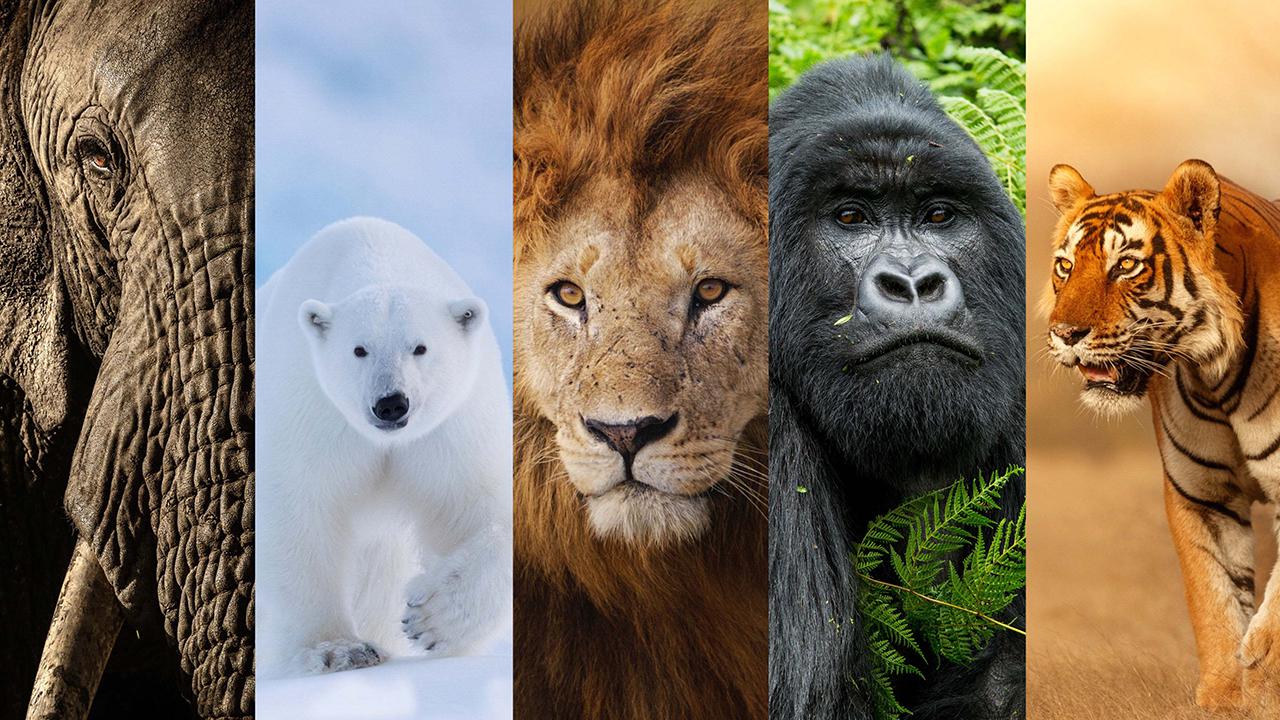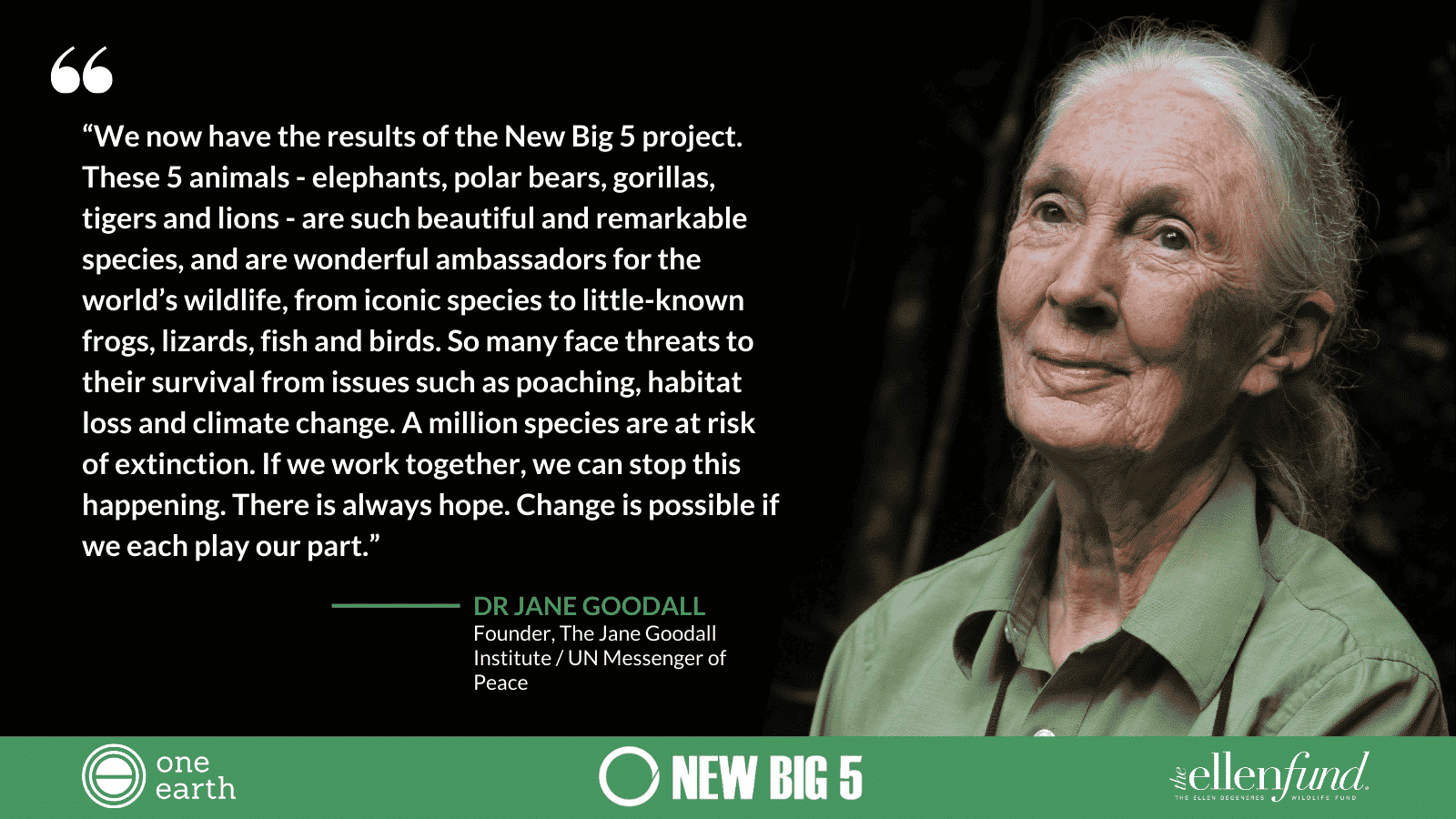
The ‘New Big 5’ Picks World’s Most Photogenic Animals to Celebrate Life, Not Death

New Big 5 project
Trophy hunters in Africa used to refer to a “Big 5” of wild animals that were particularly dangerous to kill: elephant, rhino, leopard, Cape buffalo and lion. Now, a new initiative seeks to transform the Big 5 concept into a celebration of life, not death.
In a bid to raise awareness of the importance of biodiversity, a group of more than 250 wildlife photographers, conservationists and nonprofits came together to organize the New Big 5 of Wildlife Photography by asking people around the world to vote on their favorite animals to photograph or see photographed. As of today, the winners are in.
The New Big 5 of Wildlife Photograph are elephants, polar bears, gorillas, tigers and lions.
“The 5 animals that wildlife lovers around the world have voted to include in the New Big 5 of Wildlife Photography – elephants, gorillas, tigers, lions and polar bears – are not just some of the most beautiful, incredible animals on the planet. All 5 also face serious threats to their existence,” Graeme Green, a British wildlife photographer and journalist who founded the New Big 5 project, said in a statement.
Voting on the New Big 5 launched in April of 2020. Since then, more than 50,000 people from around the world have voted for their favorite furry camera star. However, the New Big 5 project isn’t just about the winners. Instead, the initiative seeks to use these iconic animals as an example of the pressures facing many unique species, as habitat loss, poaching, conflict with humans, the wildlife trade and the climate crisis contribute to a sixth mass extinction.
“We’re currently experiencing the worst spate of species die-offs since the loss of the dinosaurs 65 million years ago. But unlike those past mass extinctions, the current crisis is almost entirely caused by us: humans,” photographer Marsel van Oosten said in a statement.”The New Big 5 consists of elephants, polar bears, gorillas, tigers and lions – some of the most iconic animals on our planet. They’re a stark reminder of what’s at stake if we don’t change our ways. That’s how I will look at each of them, as beautiful representatives of the many thousands of other, often lesser-known species who desperately need our help.”
That said, each of the winning species faces unique challenges and makes a unique contribution to the web of life. They are all listed as either Critically Endangered, Endangered or Vulnerable by the International Union for Conservation of Nature (IUCN) and they are all keystone species in their ecosystems.
- Elephants: As the largest living land mammal, elephants are important “ecosystem engineers” that shape landscapes by moving through vegetation and spreading seeds. However, there are less than half a million of these majestic creatures left alive, and an estimated 55 African elephants are still killed by poachers every day.
- Polar Bears: Polar bears are the largest carnivores on Earth, but their hunting grounds are disappearing as warming temperatures melt Arctic sea ice. There are around 23,315 left, and one study found that that number could dip towards zero by 2100 if nothing is done to stop the climate crisis.
- Gorillas: As the world’s largest primates, gorillas are essential to the health of the forests where they live in Rwanda, Uganda and the Democratic Republic of the Condo. While mountain gorillas are recovering due to conservation efforts, Grauer’s gorillas are still critically endangered. Both populations are threatened by habitat loss.
- Lions: Lions are important for controlling the population of herbivores in their ecosystems, but their numbers have fallen by around 50 percent in the last 25 years. They are threatened by poaching, habitat loss and bushmeat hunting, which reduces their prey.
- Tigers: Of all the world’s big cats, tigers are the closest to extinction. They are listed as endangered by the IUCN, and there are only around 3,900 left in the wild, though there are a further around 20,000 in captivity. They are especially threatened by poaching, as their body parts are used in traditional Chinese medicine.
While learning about the threats facing these amazing animals may be disheartening, the ultimate goal of the New Big 5 is to protect these and other animals.
“A million species are at risk of extinction,” Jane Goodall, who supports the project, said in a statement. “If we work together, we can stop this happening. There is always hope. Change is possible if we each play our part.”
- Beat the COVID-19 Blues With These Wildlife and Nature Livecams ...
- 'Otherworldly' Photo of Endangered Monkeys Wins Top Award ...
- Four Vital Tips for Ethical Wildlife Photography - EcoWatch
- Why We Need (Ethical) Wildlife Photography Now More Than Ever ...
- South Africa Announced Plans to End Captive Lion Breeding for Hunting

 233k
233k  41k
41k  Subscribe
Subscribe 
